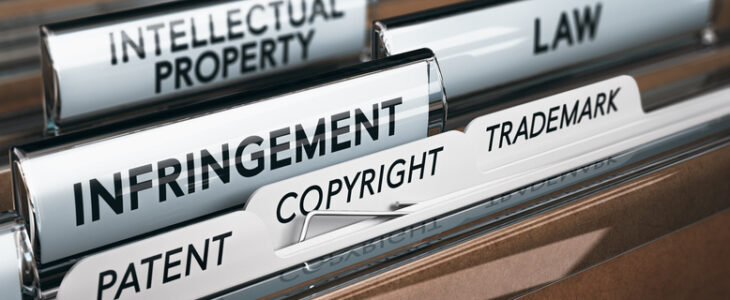When you see a product or process that resembles your patented invention, you might wonder whether the manufacturer of that other product has infringed upon your patent rights. Determining whether you may have a patent infringement claim begins with understanding patent rights and how to evaluate whether a product or process falls within your patent’s scope.
Understanding Patent Infringement
A patent provides an inventor with the exclusive legal rights to monetize an invention, including the process for making it. A party may commit patent infringement when they use, copy, or sell a patented invention without the patent holder’s consent. Patent infringement may occur when a party makes or sells an infringing product in a jurisdiction, imports a product into a jurisdiction that infringes upon a patent issued under that jurisdiction’s laws, or induces another party to infringe upon a patent.
The Federal Patent Act governs patent law and patent infringement in the United States. Patent holders who have had their rights infringed by others may also file other legal claims in addition to patent infringement, such as claims of unfair competition when patent infringement occurs by selling counterfeit or gray market products.
Elements of a Patent Infringement Claim
A patent infringement claim involves several legal components. First, the patent holder must allege direct or indirect infringement. Direct infringement occurs when a party makes, sells, or uses a patented invention without the patent holder’s permission. Indirect infringement can occur when a party induces a third party to infringe upon a patent.
Many patent infringement claims turn on claim construction, the process by which a court interprets the meaning and scope of a patent’s claims. Claim construction can define the scope of protection a patent offers and determine whether an accused product infringes upon the patent.
Patent infringement claims can proceed under a theory of literal infringement or the doctrine of equivalents. When a product or process “literally” infringes upon a patent, the accused product or process contains every element of the patent’s claim(s), and is thus identical to the claimed invention. Under the doctrine of equivalents, meanwhile, a product or process can infringe upon a patent by performing the same function in the same method to achieve the same result claimed by the patent.
The Process of Investigating Potential Patent Infringement
Determining whether you may have a patent infringement claim requires thorough investigation and analysis. A patent infringement attorney can evaluate your case.
Investigating patent infringement begins with reviewing and analyzing the scope of your patent’s claims to determine the nature of the claimed invention. Once you’ve determined your patent’s scope, you can evaluate whether the accused product or process falls within the scope of your patent’s claims.
An experienced patent attorney can review your patent and the accused product to determine whether it might infringe under a theory of literal infringement or the doctrine of equivalents. An attorney can also identify potential defenses that the opposing party might raise in a patent infringement claim, such as:
- Non-Infringement – A defendant might show that their product or process does not infringe upon all the patent claims or does not perform a substantially similar function in a similar method as the claimed invention.
- Prior Art – A defendant might challenge the validity of a patent or defend against an infringement claim by showing that the claimed invention or accused product or process naturally derives from prior art.
- Invalidity – Defendants in patent infringement cases may also challenge the patent’s validity by arguing that it claims non-patentable subject matter, such as an abstract idea or natural phenomenon.
Contact a Patent Litigation Attorney Today
When another party has infringed upon your patent, you need dedicated legal representation to help you fight to protect your rights and interests and seek compensation for the financial losses you’ve suffered. Contact Sul Le Law Firm PLLC today for an initial consultation with a seasoned Texas patent litigation lawyer to determine whether you may have an infringement case.

